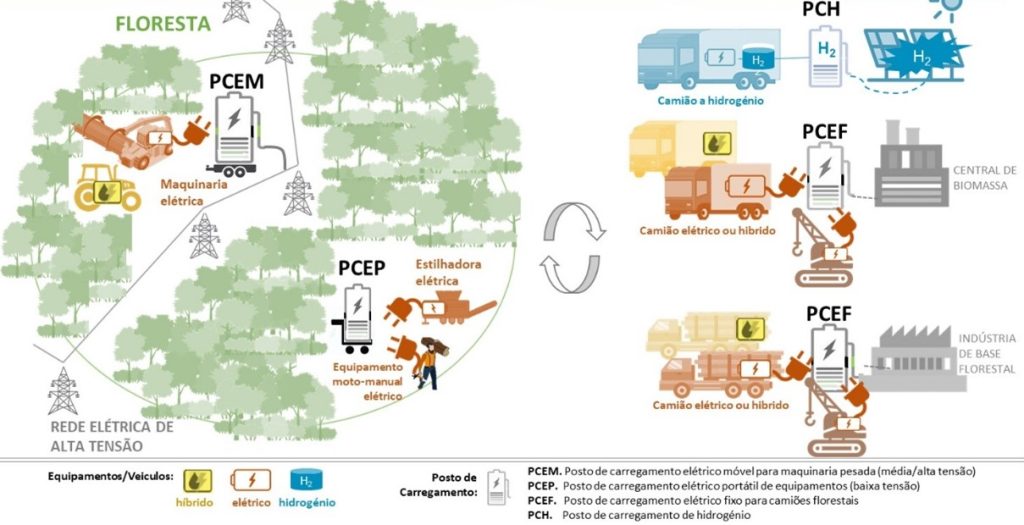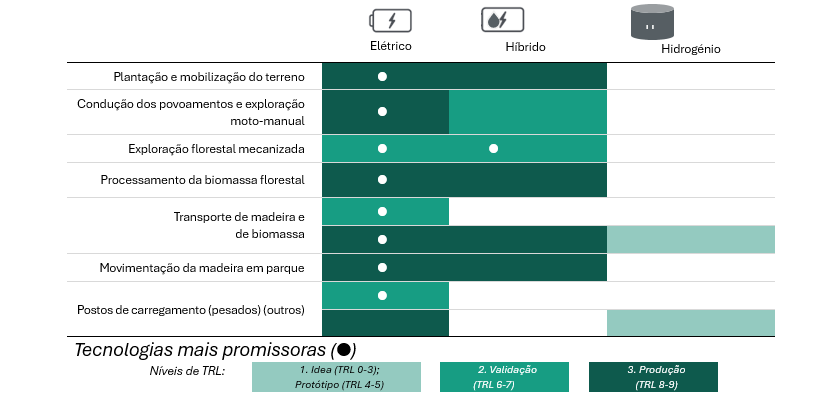The Green Deal package is a set of policies from the European Commission, published in December 2019, aimed at achieving carbon neutrality by 2050, meaning progressively reducing greenhouse gas emissions so that the balance between emissions and removals from the atmosphere (e.g., by forests) is zero by 2050. By 2030, a reduction of 55% in greenhouse gas emissions is expected compared to 1990 levels; and also planting an additional 3 billion trees.
Thus, based on this, a working group was established with experts from the forestry sector who supported the assessment of TRL (Technology Readiness Level), that is, the current technological maturity level of equipment in the different categories of operations in Portugal. In addition, they also defined a common global vision “Green Deal” for the forest to be adopted in the country, including the most promising technologies with examples of equipment and charging stations.

The global “Green Deal” vision calls for the adoption of highly mature electric and hybrid solutions for all forestry operations, with a view to reducing GHG emissions associated with sustainable forest management and reducing the risk of fire.
The TRL scale was introduced in EU-funded projects in 2012 and is currently the benchmark for determining the development or maturity of research and its readiness for market absorption and potential investments.

The high level of maturity of electric motorization solutions for forestry in Portugal can be seen in the table above. In fact, it is already possible to find electric or hybrid equipment at level 3 for the vast majority of forestry operations. Particularly noteworthy is small electric motorized equipment (chainsaws, brush cutters, pruning shears, etc.), as well as forest biomass shredders, mini-excavators and forestry tractors that can be used for planting and land preparation.
On level 2 are the hybrid harvesters recently introduced in Portugal and in a testing phase. This is an area in great expansion, with hybrid versions of the most popular equipment from the main brands, such as Komatsu, John Deere and Ponsse, expected soon. Also on level 2 are the majority of timber handling equipment, including electric forwarders and timber trucks, which are currently being tested in a real-world environment. The exceptions are electric and “closed box” trucks that can be used to transport chips and electric cranes, with several models already on the market.
Hydrogen technology still seems to be at an early stage, requiring further research and development.
Quinta de Prados,
Campus da UTAD
5001-801 Vila Real, Portugal
geral@forestwise.pt
+351 259 350 253
Co-financed by:
